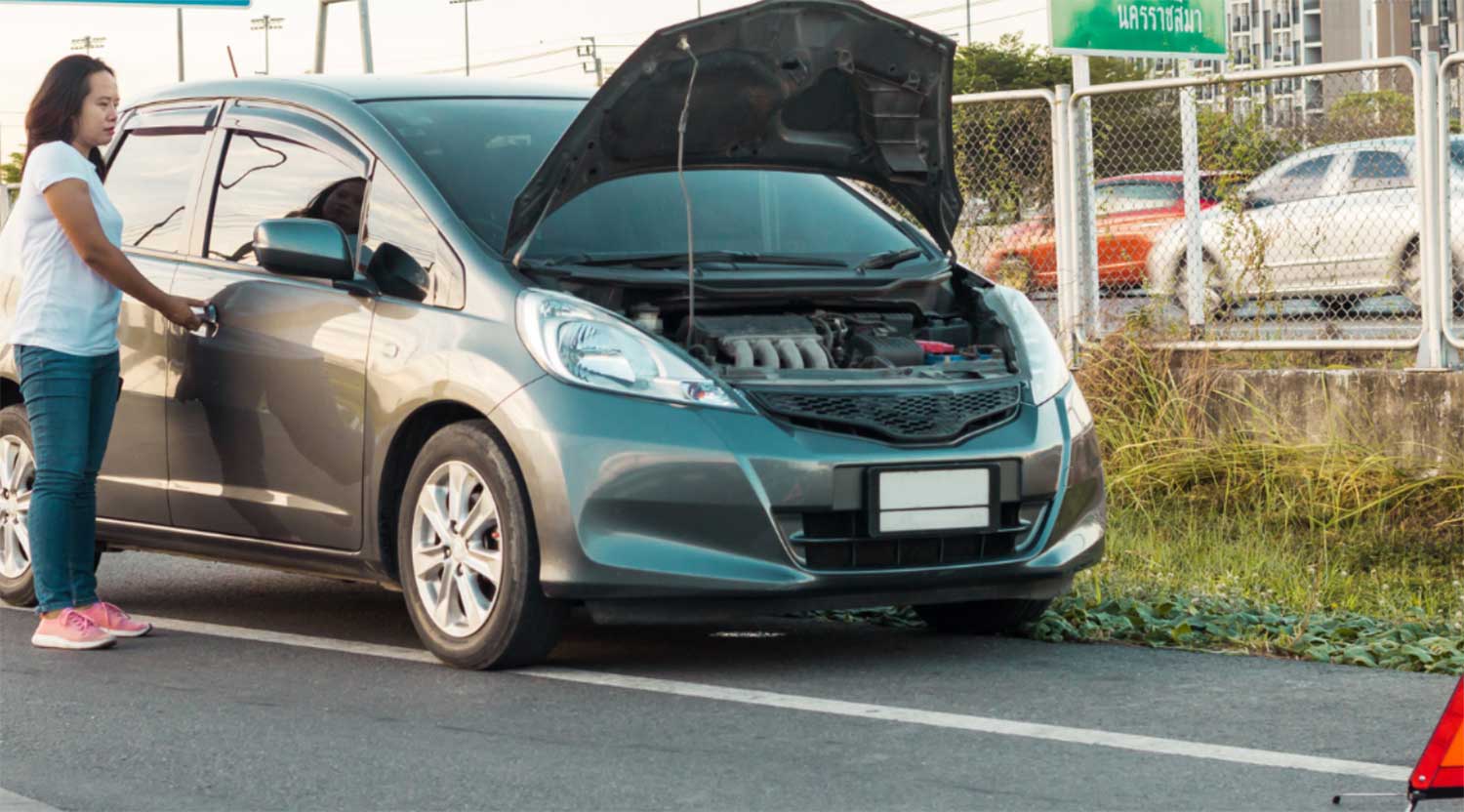What to do when your car breaks down.
Imagine driving down a winding road miles from Prescott Valley, AZ, and even further from the nearest town. Suddenly, your car sputters and stalls. You’re in nowhere, and your vehicle has just broken down. It’s a scenario nobody wants to imagine, but one that could happen to us. That’s why it’s essential to be prepared and know what steps to take if you find yourself in this situation.
The first moments after a vehicle breakdown are critical for ensuring the safety of yourself and your passengers. Firstly, aim to get your car off the roadway if it’s safe. This minimizes the risk of a collision with passing vehicles. Look for a nearby hard shoulder, parking area, or side road where your vehicle will not obstruct traffic.
Once your vehicle is positioned safely, turn on your hazard lights. Regardless of the time of day or weather conditions, activating your hazard lights alerts other drivers of your situation, providing a visual signal that allows them to navigate safely around your vehicle. If your breakdown happens at night or in poor visibility conditions, consider supplementing your hazard lights with other emergency warning devices, such as flares or reflective triangles, if you have them in your emergency kit. Here’s a handy guide to building a kit to keep in your car.
Before attempting to assess your vehicle’s condition or perform any essential repairs:
- Ensure it is safe.
- Look out for passing traffic and be aware of your surroundings.
- Always prioritize personal safety over vehicle repair; some issues may require professional help.
Before you can address a problem, you need to understand it. Here are a few troubleshooting tips to help identify common issues when your car breaks down:
1. Check Your Dashboard:
The lights on your dashboard aren’t just for show. They provide valuable insight into what might be wrong with your car. Is the check engine light on? How about the battery light or the oil pressure warning light? These symbols are your car’s way of communicating with you.
2. Listen for Sounds:
Unusual noises can also be indicators of car problems. A knocking sound from the engine, a squealing from the brakes, or a rumbling noise from under your vehicle can all hint at specific issues.
3. Check for Leaks:
If your car is leaving behind puddles of fluid, that’s a clear sign something’s not right. Different fluids can signify various problems: green or orange fluid may suggest a coolant leak, while dark red or brown fluid could indicate an oil or brake leak.
4. Monitor Vehicle Performance:
Is your car less responsive than usual? Is it taking longer to accelerate? Is the steering heavier? Any changes in how your vehicle drives could indicate a problem.
5. Assess the Battery:
The battery could be to blame if your car’s electrical systems aren’t working. Check the battery terminals for any corrosion, and if you have a multimeter in your vehicle, you can also check the battery charge.
6. Examine the Tires:
Flat tires or blowouts are common causes of breakdowns. Regularly inspect your tires for proper inflation, tread depth, and visible damage like cuts or punctures.
After you’ve ensured everyone’s safety and assessed your vehicle’s situation, it’s time to reach out for help.
You might be miles from the hustle and bustle of Grand Prairie, but that doesn’t mean you’re alone. Use your cell phone to call for roadside assistance. If you’re a member of an auto club like AAA, they can provide critical help during this time.
You might need to flag down a passerby for help if you don’t have cell reception. Use a white cloth or a piece of paper in your window to signal distress, or use flares or warning triangles from your emergency kit if you have them.
While waiting for help to arrive, it’s critical to stay safe. If possible, remain inside your vehicle with the doors locked. If you’ve had to flag down a passerby, be wary of anyone who offers to take you to a nearby town. It’s safer to stay with your vehicle and wait for professional help.
While this guide is designed to help you know what to do if your car breaks down in the middle of nowhere, regular vehicle maintenance is the best defense against this type of situation. Regular check-ups can catch problems before they leave you stranded. That’s where Prescott Valley Transmission comes in!
Facing transmission troubles with your vehicle? Let Prescott Valley Transmissions be your guiding light. Understanding that car issues, especially with the transmission, can be daunting, we’ve dedicated ourselves to perfecting the art of automotive repair. When you choose us, you’re not just getting a service; you’re entrusting your vehicle to a team that treats it like an orchestra, ensuring every part plays its role seamlessly. Regular check-ups can enhance your car’s lifespan and performance. So, why wait? If you’re seeking unparalleled expertise and a commitment as steady as the sunrise, visit us at 7420 E. 2nd St., Prescott Valley, AZ 86314, or give us a call at 928-759-8870. Let’s journey together towards a smoother ride with Prescott Valley Transmissions – your car’s best companion!

